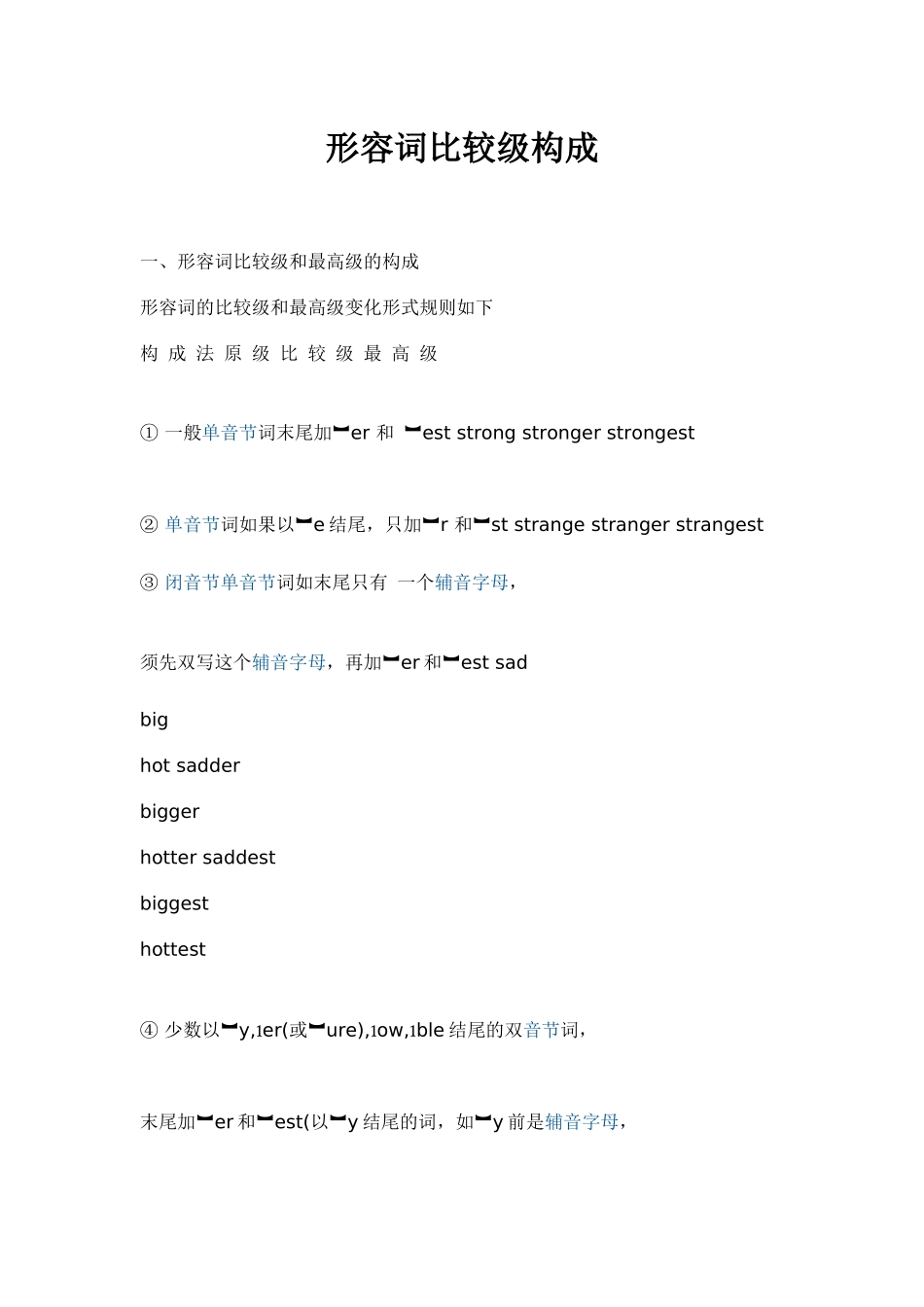形容词比较级构成一、形容词比较级和最高级的构成 形容词的比较级和最高级变化形式规则如下 构 成 法 原 级 比 较 级 最 高 级 ① 一般单音节词末尾加er 和 est strong stronger strongest ② 单音节词如果以e 结尾,只加r 和st strange stranger strangest ③ 闭音节单音节词如末尾只有 一个辅音字母, 须先双写这个辅音字母,再加er 和est sad big hot sadder bigger hotter saddest biggest hottest ④ 少数以y,er(或ure),ow,ble 结尾的双音节词, 末尾加er 和est(以y 结尾的词,如y 前是辅音字母, 把 y 变成 i,再加er 和est,以e 结尾的词仍 只加r 和st) angry clever narrow noble angrier cleverer narrower nobler angrest cleverest narrowest noblest ⑤ 其他双音节和多音节词都在前面加单词 more 和 most different more different most different 1) The most high 〔A〕 mountain in 〔B〕 the world is Mount Everest, which is situated 〔C〕 in Nepal and is twentynine thousand one hundred and fourty one feet high 〔D〕 . 2) This house is spaciouser 〔A〕 than that 〔B〕 white 〔C〕 one I bought in Rapid City, South Dakota 〔D〕 last year. 3) Research in the social 〔A〕 sciences often proves difficulter 〔B〕 than similar 〔C〕 work in the physical 〔D〕 sciences. 二、形容词比较级或最高级的特殊形式: 1. 三个或三个以上音节的形容词只能加 more 和 most 只能说 more beautiful 而不能说 beautifuller; 只能说 the most beautiful而不能说 beautifullest。 但是,以形容前缀un 结尾的三音节形容词不适合上述情况,如unhappy,untidy,我们可以说:unhappier→unhappiest, untidier→untidiest 2. 由ING 分词和ED 分词演变过来的形容词(包括不规则动词如know→known)只能加 more 或 most 来表示它们的比较级和最高级 more(most) striking, more(most) interesting, more(most) wounded, more(most)worn 等。 4) The drawings 〔A〕 of the old masters 〔B〕 are among the treasuredest 〔C〕 works in museums 〔D〕 ....


